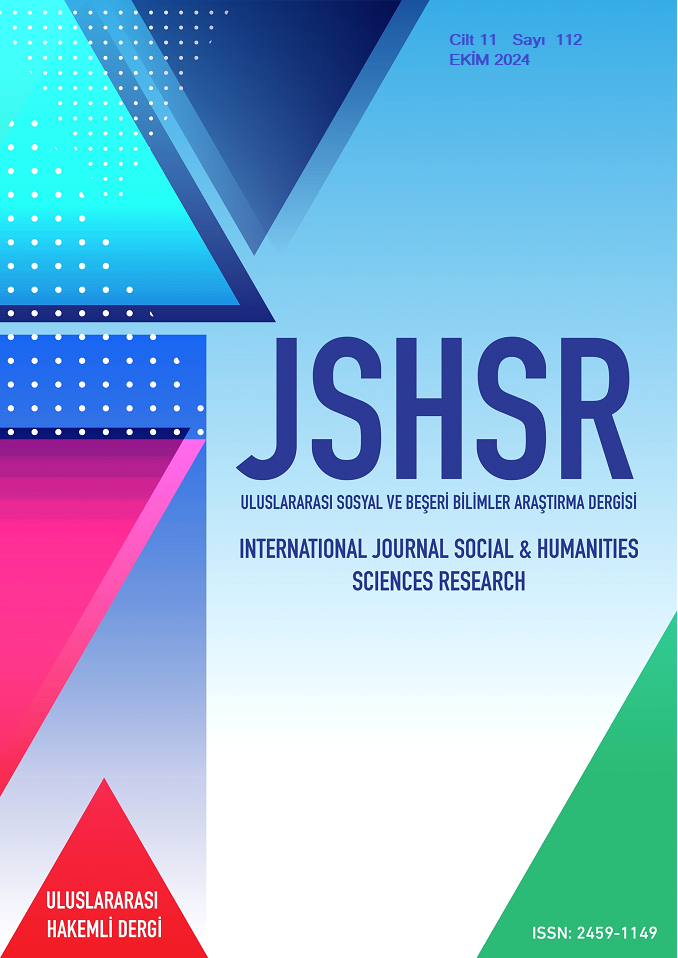A A Perspective on Kemani Tatyos Efendi Through the Approach of Melodic Nuclei
DOI:
https://doi.org/10.5281/zenodo.14020381Keywords:
Kemani Tatyos Efendi, Rast Perşev, Melodic NucleiAbstract
Kemani Tatyos Efendi is one of the most distinguished and significant composers and performers of Turkish Classical Music. Renowned for his compositional prowess, Tatyos Efendi utilized the traditional features of Classical Turkish Music makams in a manner suited to the demands of his time and composed his works accordingly. Among the seven peşrevs identified through research, his ‘Rast Peşrev’ is examined in this study using the ‘melodic nuclei’ approach. The article elaborates on the concept of the melodic kernel, analyzing the functional roles of the pitches that form the melodic structure of the piece. First, Tatyos Efendi’s life and musical career are briefly discussed, along with his contributions to Ottoman-Turkish music. Subsequently, the unique melodic coding of the makam structures, which represent the makam itself, is detailed, and Rast Peşrev is analyzed using this approach. In this context, the pitches in Tatyos Efendi’s Rast Peşrev and how they reflect the character of the makam are thoroughly examined, providing an in-depth evaluation of the musical structure of the piece. In conclusion, Kemani Tatyos Efendi's Rast Peşrev has been analyzed using the melodic nuclei method, and the findings have been reported.
References
Akdeniz, H. B. (2017). Batı Müziğinin Osmanlı/Türk Temsilcileri. Journal Of Ottoman Legacy Studies (Jols), 4(10), 63-84.
Akdeniz, H. B. & Akdeniz, A. Ö. (2019). Osmanlı/Türk Musiki Tarihine Damgasını Vuran Bestekârlarımız. Journal Of Strategic Research İn Social Science, 5(1), 295-322.
Bayraktarkatal, M. E. ve Güray, C. (2021). Makamın Yapıtaşı. Anadolu ve Komşu Coğrafyalarda Makam Müziği Atlası, AKM Yayınları, Ankara.
Bayraktarkatal, M. E. ve Güray, C. (2021). Makam Analizi Ders Notları, Hacettepe Üniversitesi Ankara Devlet Konservatuarı Müzik Teorileri Anabilim Dalı.
Bayraktarkatal, E. ve Öztürk, O. M. (2012). Ezgisel Kodların Belirlediği Bir sistem Olarak Makam Kavramı: Hüseyni Makamının İncelenmesi, Porte Akademik Müzik ve Dans Araştırmaları Dergisi (PAMDAD), 4, s. 24-59. Erişim adresi: https://www.ertugrulbayraktar.com/ezgiselkod
Giray, M. Z. (2023). Maqam Analysis Of Tatyos Efendi’s Peşrevs, İnönü Üniversitesi Kültür ve Sanat Dergisi, 9(1), s. 213 – 235
Güray, C. (2017). Bı̇n Yılın Mı̇rası Makamı Var Eden Döngü: Edvar geleneği. İstanbul: Pan Yayıncılık
İlgay, K. (2014). XIX. Yüzyıl Osmanlı-Türk Müziği Ekseninde Bestekâr Kemânî Tatyos Efendi’nin Müzikal Kimliği Üzerine Bir İnceleme. (Yayımlanmamış Yüksek Lisans Tezi). Atatürk Üniversitesi, Erzurum.
neyzen.com (t.y.). Kemani Tatyos Efendi- Rast Peşrevi https://www.neyzen.com/nota_arsivi/ 02_klasik_eserler/075_rast/rast_p_kemani_tatyos.pdf
Öztürk, O. M. (2014). Makam Müziğinde Ezgi ve Makam İlişkisinin Analizi ve Yorumlanması Açısından Yeni Bir Yaklaşım: Perde Düzenleri ve Makamsal Ezgi Çekirdekleri. (Yayımlanmamış Yüksek Lisans Tezi). İstanbul Teknik Üniversitesi, İstanbul.
Öztürk, S. (2014). Makamsal Ezgi Çekirdekleri ve Türk Müziği’nde Melodik Analiz. Müzik Yayınları.
Yıldız, Ş. & Güray, C. (2020). Ezgi Çekirdeği Yaklaşımıyla Bir Flamenko Eserin Makam Analizi: A Paso Lento, Etnomüzikoloji Derneği Sempozyum (Çevrimiçi) Bildirileri Kitabı, Bursa, Türkiye, ss. 92-107.
Downloads
Published
How to Cite
Issue
Section
License
Copyright (c) 2024 INTERNATIONAL JOURNAL OF SOCIAL HUMANITIES SCIENCES RESEARCH

This work is licensed under a Creative Commons Attribution 4.0 International License.


